‘Sequence of colors and sounds’: Behind the scenes of uptown Charlotte’s July 4th fireworks
For Russell Ellis, Independence Day fireworks aren’t merely a celebration.
It’s the culmination of three months of meticulously planning a symphony of lights and color to awe the Queen City.
As the man behind a show that claims to be the Southeast’s largest fireworks display, Ellis and his team from Tennessee-based Pryo Shows transform Truist Field into a stage for a dazzling 22-minute fireworks spectacle.
“The show is a way of bringing joy to people and as a tribute to the nation,” Ellis said.

The “SkyShow,” set to the tune of America’s greatest hits from Springsteen to Greenwood, marks the 10th anniversary of July Fourth celebrations at Truist Field. They’ll be just a few weeks before American athletes compete for gold at the 2024 Summer Olympics in Paris.
“This year is going to feature a special Olympic tribute,” Ellis said. “In addition to the typical stuff you can expect the rings to light up the sky with special music.”
Science behind the fireworks
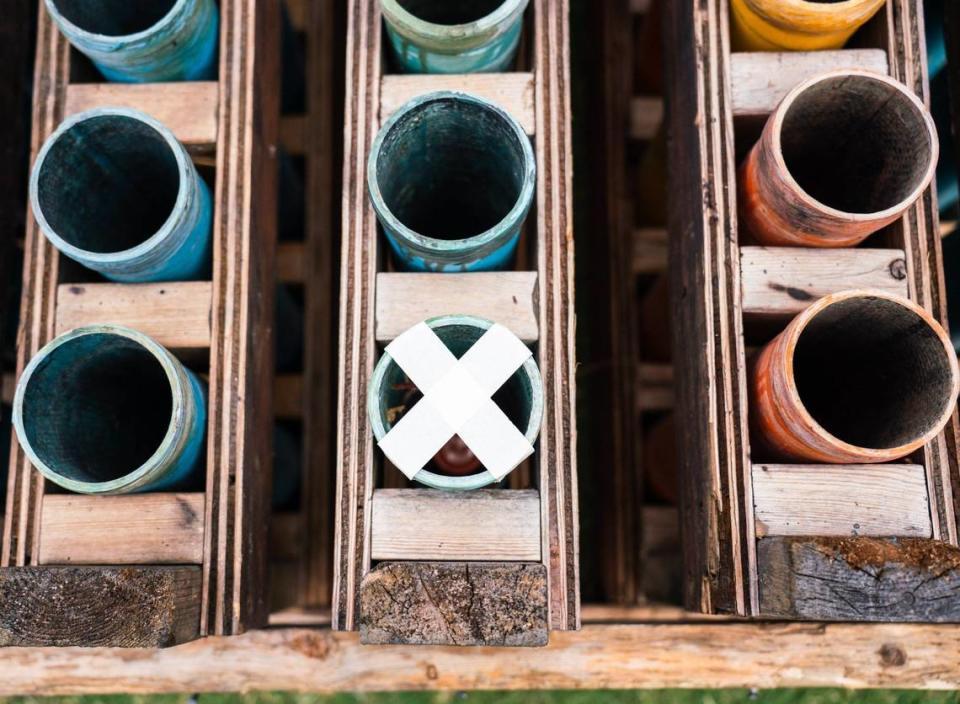
More than 22,000 fireworks will shoot into the night sky, some soaring over 250 feet in the air with about the same firepower as a small hand grenade. Some fireworks are used for the booming sound and others for colors they emit.
That color comes from tiny pellets called “stars.” They’re packed with chemical compounds that, when ignited, release energy in the form of dazzling colors. For instance, red comes from strontium, white comes from titanium and blues are made with copper.
After a firework explodes, the star pellets burst into action, igniting and burning brightly as they float through the air, leaving trails of color in their wake.
“All of our fireworks are wired together,” Ellis said. “They are programmed down to milliseconds and they all go up. Some explode more delayed then others, but it is all a sequence of colors and sounds.”
How Charlotte’s Fourth of July fireworks show happens
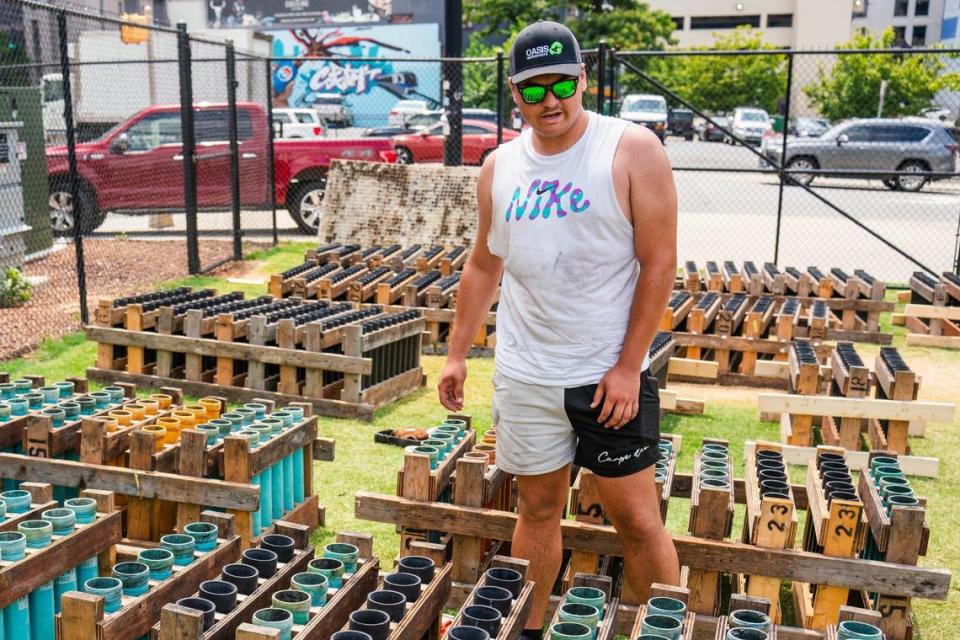
Ellis spent countless hours making sure that process works right. It’s the most important week of the year for the pyrotechnic business.
In the days leading up to Fourth of July, he packed a moving truck and drove down from Tennessee with other employees to set up the show. The most important part of moving was keeping the fireworks undamaged and the tubes they shoot out of dry.
“This is the busiest and best week of the year for business,” he said. “Since we kept the gun powder dry and the products stored properly, I have no doubt they’re going to do great.”
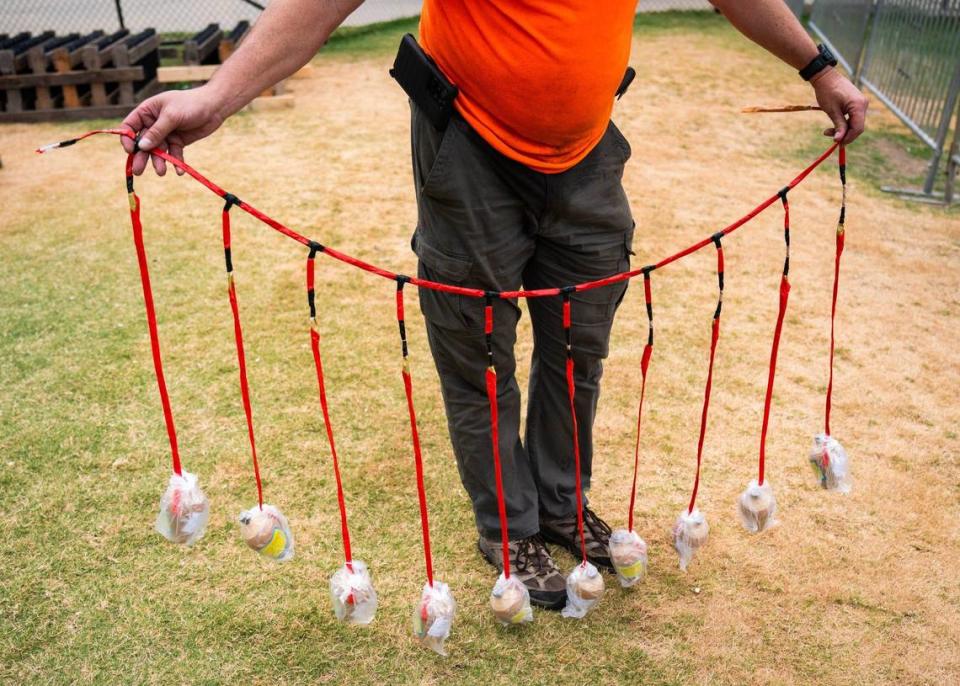
Independence Day is also the biggest day of the year for the Knights. Last year, the team sold out the stadium and sold over 2,500 hot dogs, 7,300 beers, 2,500 sodas, 500 packs of peanuts and 300 burgers. That’s more hot dogs than you could fit on a regulation baseball field end-to-end — 10 times over.
“The entire day of festivities is the most important day of the year for the Knights,” said Dan Rajkowski, Knights chief operating officer. “We know the game brings in people, but the tradition of baseball and fireworks goes back as far as I can remember and we try to tap into that sense of nostalgia.”
Fireworks on July 4th
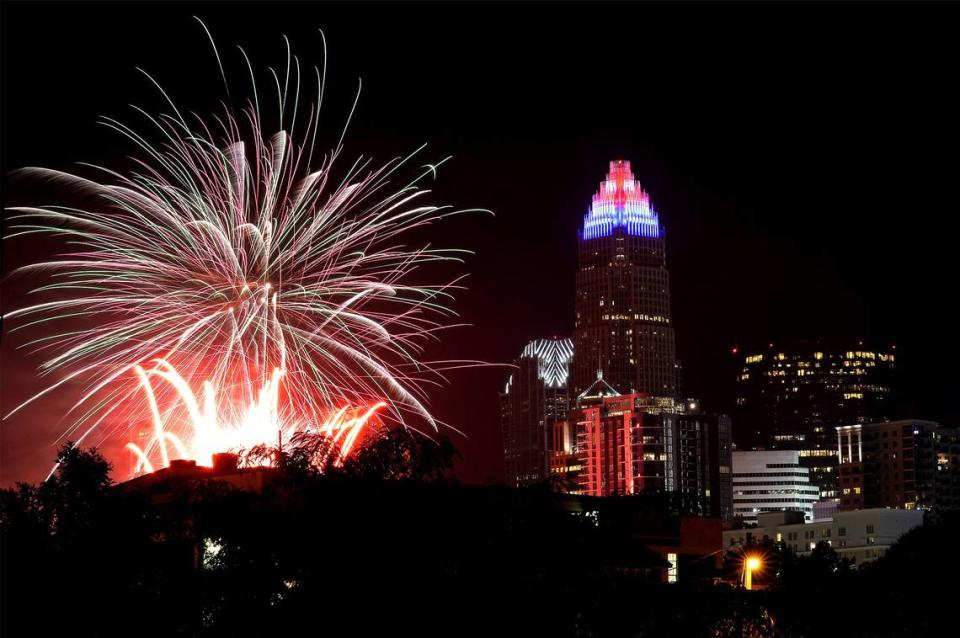
Rajkowski is right. That mesmerizing dance of firecrackers and sparks across the night sky on Independence Day has become an American tradition like apple pie and intrinsically tied to the birth of the nation.
On July 3, 1776, just a day after the Continental Congress approved the 2nd resolution declaring the independence from Great Britain, John Adams sent a letter to his wife Abigail envisioning an annual celebration to mark the occasion.
“It ought to be solemnized with Pomp and Parade, with Shews, Games, Sports, Guns, Bells, Bonfires and Illuminations from one End of this Continent to the other from this Time forward forever more,” the founding father wrote.
And Adams had his wish. The following year, colonists commemorated newfound independence with festivities including 13-gun salutes, bonfires and fireworks.
That history isn’t lost on Rajkowski. His favorite part of the night is a tribute to military service members before the fireworks and the patriotic music, like God Bless America, that plays throughout the show.
“We unveil a big flag in the outfield and play each service anthem to the Army, Marine Corps, Navy, Air Force and Coast Guard,” he said. “It is what Independence Day is all about. Fighting for our freedoms from oppression and the moment always brings the crowd to their feet.”
Knights Fourth of July celebration details
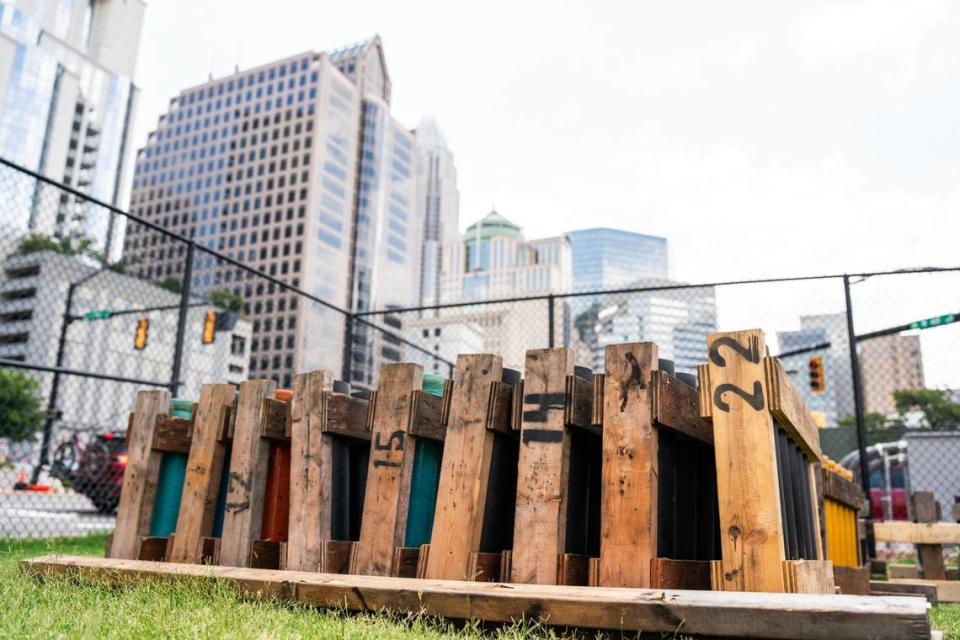
While military hymns play and the sun sets on Truist Field, Ellis and other technicians talk with CMPD and the fire department to ensure the area around the fireworks is clear of all spectators. On average, a show needs a fallout zone of about 500 feet, but larger displays can need up to 2,000 feet. On Thursday, all of 4th Street will close down for the show.
This year the 50 full-time Pyro Show employees are spread across the country setting up firework shows in stadiums, parks, beach fronts and barges, but most people orchestrating the shows are part-time workers.
After the tribute to service members finishes, the countdown is on.
Three months of planning, starting with developing a soundtrack, to digitally simulating the show and purchasing and setting up thousands of dollars worth of explosives all lead up to a 22 minute display of a “symphony of lights.”
For Ellis, the process looks different from when he started in the industry years ago, but many feelings stay the same. He no longer uses a torch to light the fireworks — a process phased out at the turn of the century. Instead, he can simply push a button to start a pre-programed sequence.
Even so, the nerves around counting down “3, 2, 1, go,” and lighting up the night sky remains unchanged since he started in 1987.
“My heart always starts to beat faster as we get closer to start,” Ellis said. “I’m always happy when they’re finished because I can see my whole work and what everybody has done.
“Hearing the crowd is what makes it all worthwhile.”


